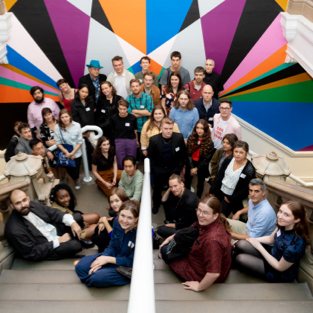What is the context of the archive itself personal, private, anecdotal, found? Where is it seated? [1]
The New Contemporaries Archives & Identities Symposium engaged with a lot of fundamental questions around archives and the topics really resonated with me and my practice. The discussions around how histories are recorded and how archives are maintained reminded me of the importance of the role of the archive in how we continue to shape our understanding of the past.
The panel discussion with Sunil Gupta, Duncan Campbell, Jo Melvin and Althea Greenan provided new ways of looking at the possibilities and challenges that the archive presents. Questions around access were repeatedly discussed: The difficulties that arise from accessing specific archives as well as the financial cost of maintaining and working with archives. This is something that I personally wish could have been explored more, and when touched on demonstrated the need for a longer conversation around access. Archives can be places that are difficult to access and navigate not only physically but also institutionally. The transfer of private archives to public doesn’t always mean that they become more accessible.
Kobby Adi, Rumour of Riots.
Archives can also be fragmented places, there are obvious gaps and lapses within them and limits on how much they can provide us. What is and isn’t available, how they are managed and maintained. What has and hasn’t been digitised or recorded and of course what is private and public. Archives are not always stagnant but they can dwell. As Derrida explains "the dwelling, this place where they dwell permanently, marks this institutional passage from the private to the public, which does not always mean from the secret to the nonsecret." [2]
Watching Kobby Adi’s enthralling film that was screened as part of the symposium, Rumours of Riots reveals the possibilities that having access allows. The ability to present new ways of thinking about the past, which leaves room for reimagining past histories in the present. What happens when they don’t dwell. When the archive is opened up to us, and we do have access to explore, interpret and resist, there is a possibility to restore and redefine those once overlooked histories. The work of the Women of Colour Index (collated by artist Rita Keegan) and the Women’s Art Library collection, that Greenan reflected on, illustrates the role of digitalisation in making collections that were previously forgotten, available and "reaffirming their place in the archive" [3]. Their work also shows the importance of maintaining community archives, as a rich source of knowledge and the pressing need to make evidence of the work we create as artists.
Rewatch the panel discussion:
---
[1] Jo Melvin, Archives & Identities: Panel Discussion
[2] Jacques Derrida, Archive Fever: A Freudian Impression (University of Chicago Press, 1995), p.2.
[3] Althea Greenan, Archives & Identities: Panel Discussion
Ufuoma Essi (b. 1995, London) is an artist based in London. Her work explores intersectional themes of race, gender, class and sexuality. Archives form an essential source, as she seeks to interrogate and disrupt the silences and gaps within historical narratives.
